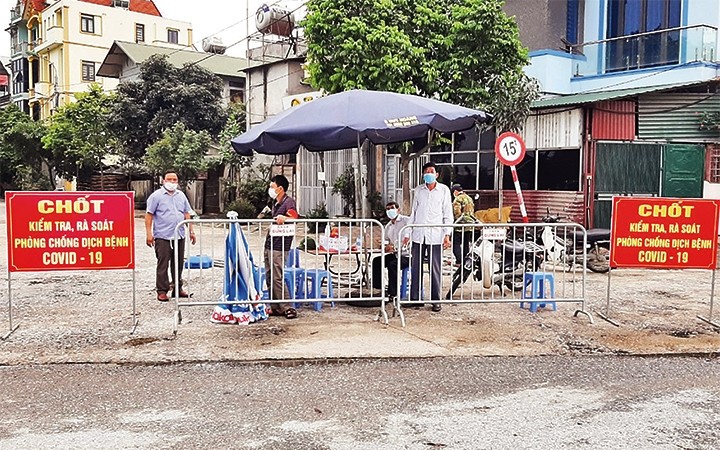In the last days of April and early May, Dong Anh was one of the "hot spots" for the epidemic in Hanoi with four outbreaks of community infections, including in Lo Giao Village in Viet Hung Commune, the Co Loa Station dormitory in Viet Hung Commune, Bac Village in Kim No Commune and the National Hospital for Tropical Diseases 2 in Kim Chung Commune. Along with the drastic direction of the city’s leaders, Dong Anh District's Steering Committee for COVID-19 prevention and control has developed many creative initiatives to turn Dong Anh into a “safe hot spot”.
The most important initiative in the epidemic prevention and control in the district is the implementation of three-layer zoning model in quarantine areas. Accordingly, F0 and F1 cases were brought into the hospitals for treatment and centralised isolation. The first “isolation layer” was to "lock down" the isolated outbreak and effectively manage the quarantine of the familiesof F1 cases and F2 people. Meanwhile, the second layer was the establishment of checkpoints to control internal activities in the villages and alleys; and the third zoning the outer circle for all hamlets, villages and residential areas with 1,611 posts. For the third layer, many residential areas have set up “hard checkpoints” to limit free movement and force locals to go through "soft checkpoints" in order to ensure the health control. All people entering and leaving residential areas during the epidemic period must make medical declarations, receive temperature checks, and declare their destinations in the residential areas. If people do not comply with these requirements, they will not be allowed to enter or leave. In other words, three layers of isolation included the “core” with the implementation of social distancing under the Prime Minister's Directive No.16-CT/TTg; the second following the PM’s Directive No.15-CT/TTg; and the outermost layer under the PM’s Directive No.19-CT/TTg. These three layers helped assurance of the small-scale blockade of infected areas; however, the management of isolation was conducted very closely, with little impact on the business and daily activities of other areas. As a result, if a community infection was detected, the localisation and tracing would be conducted promptly, limiting the spread of the epidemic.
The consensus among the local people is necessary to deploy the three-layer isolation model. The Dong Anh District’s authorities has combined various forms of propaganda, including loudspeakers, leaflets and mobile propaganda teams. Thanks to the locals’ support, over 11,000 volunteers were mobilised to join the control forces at the “checkpoints”. Three shifts, one of which consisted of three people, worked for a day. This approach has helped Dong Anh to rapidly prevent the epidemic’s spread into the community and avoid the social distancing on a large scale.
The three-layer insolation model needs to be replicated in suburban areas or residential areas, alleys and buildings in the inner city where the traffic volume is not too large. It will be expanded in Hanoi if there are more outbreaks. In the context of complicated pandemic, other provinces and cities around the country should refer to the model of Dong Anh District to mobilise community strength and prevent infection sources. This is even more meaningful as vaccine resources are still limited and the community-based prevention and control of the epidemic still plays a key role in COVID-19 prevention.
















